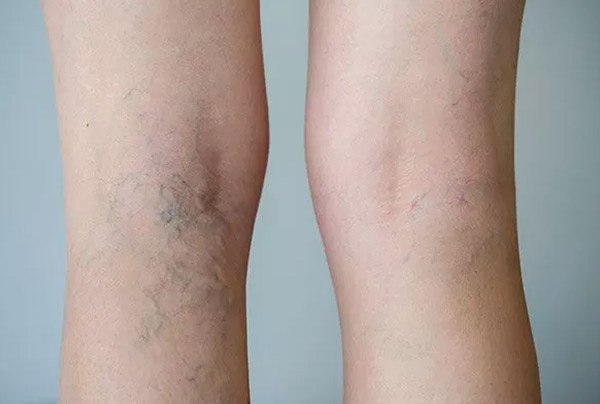Spider Veins

Spider veins, also known medically as telangiectasias or venulactasias, are the mildest manifestation of venous insufficiency. They are small, often tangled groups of tiny blood vessels that appear as thin veins visible below the surface of the skin. They are generally red, blue or purple and typically appear on thighs, lower legs and the face.
As their name suggests, they usually appear in a pattern similar to a spider web or tree branches. Spider veins can sometimes cover a large area of skin, but are a cosmetic issue that rarely cause physical symptoms. Nearly one-third of women and a quarter of the male population have spider veins on their body.
What Causes Spider Veins
Spider veins are thin vessels directly connected with the larger venous system, and like varicose veins are caused by venous reflux. Spider veins may be isolated or associated with "feeder" veins or or with larger, underlying varicose veins. They are easily diagnosed and typically have one of 3 Distinct Patterns: Sunburst or Spider Web from a central point, a tree-branch pattern, or a more linear grouping of singular lines known as "matting." Even in the absence of physical discomfort, it is important to find the source of the issue. Dr. Simon takes great care to address stopping the development of new spider veins then addressing the cosmetic solution for existing clusters.
SCHEDULE YOUR APPOINTMENT NOW!
Am I at Risk for Spider Veins?
Risk factors for developing spider veins are similar to those for varicose veins.
Age
Heredity
Pregnancy
Hormone Changes
Obesity
Occupations that require standing or sitting for long periods
Exposure to sun on fair skin
Injuries to the skin's surface
Bruising
Can I Prevent Spider Veins?
While they are not preventable, there are some measures that you can take to help aid in healthy blood flow. Exercise, weight loss, the use of compression hose and wearing flat shoes are thought to reduce the instance of spider veins. Treatments are non-invasive or minimally invasive and require very little recovery time.
© 2016 - 2017 Vegas Valley Vein Institute